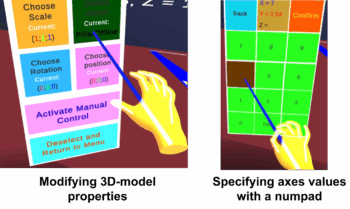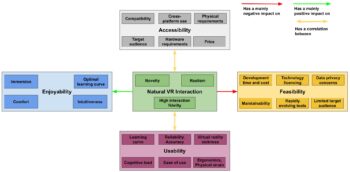The Paradox of realism: designing virtual reality mechanics for natural user interfaces
Nyyssönen, Taneli (2025-05-28)
The Paradox of Realism doctoral dissertation discusses designing natural user interfaces for virtual reality mechanics. The mechanics are evaluated from the perspective of interaction fidelity, usability, cyber sickness, enjoyability, and feasibility.
 The dissertation is formed out of research outlined in five scientific articles, each exploring slightly different types of natural interaction mechanics and how they could be best utilized. The mechanics include simulating real-world activities, such as swimming and climbing, with VR controllers, hand-tracking and gesture user interfaces with one- and two-handed gestures, eye-tracking, and context-awareness utilizing subconscious biological reactions.
The dissertation is formed out of research outlined in five scientific articles, each exploring slightly different types of natural interaction mechanics and how they could be best utilized. The mechanics include simulating real-world activities, such as swimming and climbing, with VR controllers, hand-tracking and gesture user interfaces with one- and two-handed gestures, eye-tracking, and context-awareness utilizing subconscious biological reactions.
The outlined research questions attempted to find out how natural user interfaces could be constructed to be as usable as possible while simultaneously immersive, what kind of added benefits they can bring to the user experience, and what type of applications do they suit the best.

The results show that a one-size-fits-all approach is not viable for natural virtual reality user interface design, highlighting how the differences in individuals affect the design requirements. The potential benefits of natural interaction usage include reduced cyber sickness (not verified), increased immersion (rather verified), accessibility increase (for some people), usability benefits (context-dependent), and reduced strain when interacting for extended periods of time (not verified, can change strain from one body part to another). Natural interaction is also likely better suited for entertainment and especially communication-focused applications, rather than professional work tools.
The resulting conclusions are combined into an initial design framework for natural interfaces in virtual reality. The future research hopefully will explore more natural interfaces, such as brain-computer interfaces.

